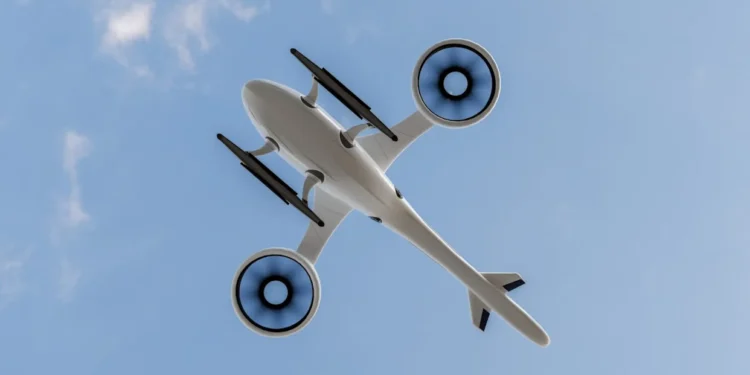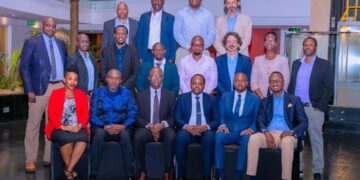In a development that may reshape the discourse around urban mobility in African cities, Rwanda has become the first country on the continent to publicly demonstrate a self-flying air taxi. The event took place during the Aviation Africa 2025 Summit held in Kigali this past September and featured a successful test flight of the EHang EH216-S, an electric vertical take-off and landing (eVTOL) aircraft capable of carrying two passengers without a pilot.
The aircraft, developed by EHang Holdings Limited — a Chinese aviation technology firm — reached an altitude of approximately 100 metres. This historic flight was made possible through a tripartite collaboration involving the Government of Rwanda, the China Road and Bridge Corporation (CRBC), and EHang. The initiative underscores a deliberate strategy to embrace next-generation transport technologies not simply as consumers, but as co-creators and regional implementers of aviation innovation.
Stakeholders in attendance included representatives from African civil aviation authorities, transport policymakers, and multilateral development partners. The demonstration was conducted with the full cooperation of Rwanda’s Ministry of Infrastructure and Rwanda Civil Aviation Authority (RCAA), aligning with the country’s broader ambitions to cultivate a robust and future-facing aviation ecosystem.
Rwanda’s Minister of Infrastructure, Jimmy Gasore, affirmed that the initiative aligns with Rwanda’s strategic vision to foster interconnectivity within urban centres and between rural and urban corridors. President Paul Kagame, in his address to the summit, remarked that the successful demonstration could serve as a catalyst for advancing “low-altitude mobility” across Africa and contribute meaningfully to the continent’s socio-economic transformation.
The showcase arrives on the back of Rwanda’s pioneering integration of drone technology for medical logistics, most notably through its partnership with Zipline, which began operations in 2016. Zipline’s drone fleet, launched from a centralised hub near Muhanga, continues to deliver vital blood supplies, medicines, and vaccines to over 400 health facilities in remote regions—reducing delivery times from hours to minutes.
By extending its aviation programme from unmanned cargo delivery to autonomous passenger transport, Rwanda is signalling a transition from proof-of-concept trials to applied, scalable innovation. It demonstrates a distinctly African capacity to lead in advanced air mobility—driven not by mimicry of global trends but by context-specific applications that meet local needs and conditions.
Yet, while this test flight is a landmark moment, substantive barriers to large-scale deployment persist. Regulatory certification, air traffic management systems, public safety assessments, and urban air mobility (UAM) infrastructure remain critical challenges not just for Rwanda but across the continent. As these systems evolve, the broader question will be how to harmonise technological advancement with equitable access, environmental stewardship, and infrastructural inclusion.
Observers note that Africa’s rapid urbanisation and growing middle class create a fertile environment for future aviation systems, provided that the roll-out is underpinned by rigorous governance frameworks and cross-border collaboration. The symbolism of the Kigali demonstration thus extends beyond Rwanda’s borders. It illustrates a broader pan-African possibility: that African states, when aligned with intentional policy frameworks and continental partnerships, can define the trajectory of emerging industries rather than inherit their terms.
The Kigali air taxi demonstration did not merely showcase a novel aircraft; it foregrounded a potential reconfiguration of intra-African mobility, placing African expertise and foresight at the heart of a narrative too often externally scripted. As the continent reflects on how best to leapfrog infrastructural limitations, such initiatives may offer a window into sustainable, Afro-optimistic futures led by African agency.















